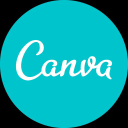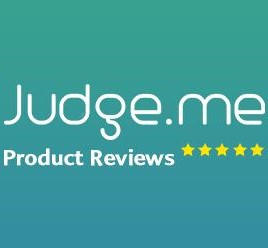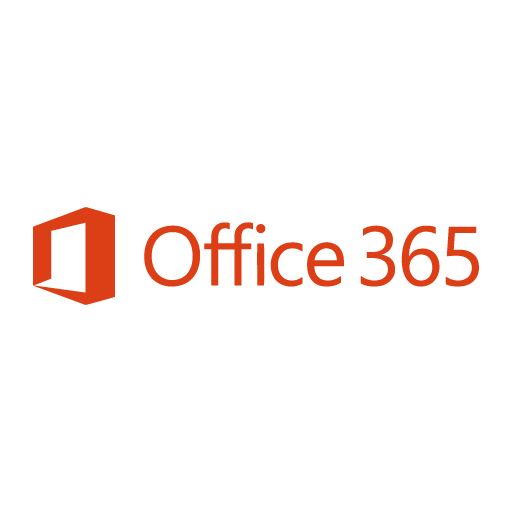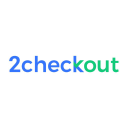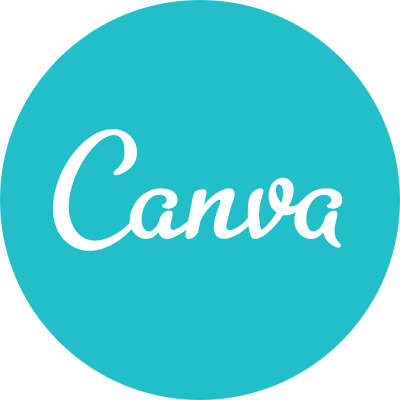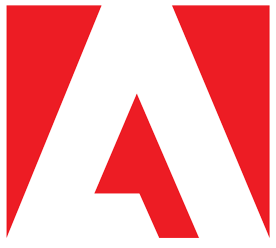How I Built A $5K/Month Pakistani Athletic Clothing Brand With Zero Experience
Hello! Who are you and what business did you start?
My name is Muhammad Sami and I am the co-founder of Bodybrics – the first Pakistan activewear brand designed for athletes. I founded the company in 2017 but had no prior experience in clothing or e-commerce.
Our target market are athletes between the age of 18-40 who value their sense of style, comfort, and are looking for slim-fitting compression types of clothing. We were one of the first to market in the activewear industry in Pakistan.
We focus primarily on items such as training t-shirts designed specifically to wick sweat and keep you dry. Our collection includes jogger pants, tracksuits, sports bras, leggings and gym accessories.
Our flagship product is the opulence tracksuit. It was one of the first to market and offered athletes an alternative to international brands that had been creating the same designs for decades.
This opulence tracksuit was tailored to fit the athlete like a second skin and was a completely new design for the market. We designed this tracksuit by taking body measurements of 10 athletes of different shapes and sizes. This helped us to create a fitted pattern that has lasted till this day and generated thousands of sales for our company.
As a one-man army, I have been able to scale this business to an average of $5,000 MRR and have grown to 20.5k followers on Instagram, and 21k followers on Facebook.
I think the most important trait of an entrepreneur is the will for continuous learning. It’s what got me to this stage without having any prior knowledge of this field when I started the business.

What's your backstory and how did you come up with the idea?
I grew up in Pakistan and went to Malaysia to study Bachelors in Mechanical Engineering. After my studies, I was more interested in starting a business because the success of my brother in business inspired me.
I did my Masters in research and worked in Engineering for 2 years, but entrepreneurship caught my attention because I always wanted to do something of my own. I always had a knack for business. I remember starting a small dog breeding business when I was 18 and made some bucks.
Initially, I had planned to set up a mechanical workshop due to my experience in the field, but the market was too saturated. Luckily, my brother was into the fitness industry and he saw a huge gap in activewear clothing. I never thought of running an activewear brand.
Back then, most gym goers would order workout clothes from abroad and that's why he came up with the idea of launching an activewear brand to cater to the growing demand of fitness enthusiasts in Pakistan. He shared the idea with me and asked me to get involved. I saw huge potential in this because there was a big gap for this niche in Pakistan.
A big advantage that we had was the existing sportswear industry in a city called Sialkot, Pakistan. My dad was born in Sialkot and he helped us get acquainted. The sportswear export industry in Sialkot is huge and there is a long list of suppliers. But the problem was that most of them didn't have any idea of activewear at that time. After some research, we found a supplier with experience in our niche.
He had the required experience but initially was reluctant to work with us as he only dealt with international clients. After several meetings and numerous phone calls explaining to him the potential of activewear in Pakistan, he agreed to work with us to launch our first collection.
Initially, he wasn't willing to work with us because the quantities required were low but after convincing him that he would surely get re-orders for the products, he agreed to work with us.
At that time, nearly the entire sportswear industry had baggy sweatpants and t-shirts. We realized there was a gap in the market for compression clothing and thought we could be successful. The initial idea was to launch compression pants, shirts, and jogger pants to the Pakistani market.
Take us through the process of building the first version of your product.
To make a product in the clothing industry, the first step is getting the design pattern right. We got some help from the supplier and he proceeded to make some samples for us to try out. However, the patterns he followed didn't fit well. This is when the idea of reverse engineering came to mind and we bought samples from some renowned international brands.
Instead of creating our designs from scratch, we took inspiration from what was already working for major international brands such as Gymshark and Alphalete. We took those inspirations and retro fitted them to fit our compression-style ideas. He adjusted the patterns and made new samples for us to try out which fit well.
Our initial $10,500 investment was all that we needed to set up the business. No loans or outside investment was used to launch the business.
From a design standpoint, I wanted our clothing to be both minimalistic and functional. We noticed major international brands were experimenting with seams but that's where the majority of products broke apart according to our supplier, especially with compression clothing.
We made our products with minimum seams and focused our efforts on having the least amount of panels for stitching. This reduced the cost and made the products durable. It also helped us create simple yet elegant designs.
For example, to remove the middle rise seam in leggings, we had to cut a single panel for both legs for it to have no seam in the middle as shown below. The pattern was difficult to make but it reduced cost and the designs have been adored by our customers.

The fabrics we wanted to introduce were high-grade fabrics used by international brands. These fabrics had a high amount of stretch and could survive for long durations. We wanted to provide clothes that could last for years and we did just that.
When it came to branding and marketing, we decided to display our logos on the exterior of all our clothing. This created awareness of our products and helped spread our brand further.
Print designs of the first samples and the first shipment of jogger pants from right to left:


First shoot of the compression shirt launched for men and women:


Describe the process of launching the business.
After 4 months of designs and edits, we were finally ready to launch. The launch of Bodybrics was a momentous day for us. After we received the first collection of products, we went ahead and launched our website for free on WordPress.
We had already set up our social media pages and announced the launch to our small following. We sent cold outreach to 100 fitness influencers on Instagram. We pitched the idea of being the face of the first Pakistan based sports apparel brand. Out of the 100 influencers we messaged, we got 10 replies. So we tripled our outreach over the next few months and landed 30 influencer partners.
By using a pool of fitness influencers, we started our PR campaign and started sending out products to them for free to try out and give their opinion.
Thankfully, all of them loved our products and shared images with their following wearing our products on Facebook and Instagram. This led to an increase in our following and within a couple of weeks we started to get orders from customers.
Customers loved our unique designs and our compression-style clothing. For the first year, we did not spend any money on ads and instead focused on reaching out to more influencers and sending them free products to try out. This rapidly helped us to increase our social following and generate sales.
We started growing rapidly and within 6 months we had grown our Instagram to 7k and generated $15k in sales.
Banner used at the launch of the first website on wordpress

Our initial $10,500 investment was all that we needed to set up the business. No loans or outside investment was used to launch the business.
The first big lesson that we learned was that the clothing business is seasonal and you have to launch your collections at the right time. We launched our first collection late and suffered losses due to that inventory being stuck for another year. Bodybrics collection of jogger pants and tracksuits go through seasonal cycles and we have to make sure the collections are launched at the correct time.
Since launch, what has worked to attract and retain customers?
Since launch, I have spent a major chunk of my earnings on marketing. This includes PR campaigns to influencers that mostly worked with sending out free products, and paid advertisements on Facebook and Instagram.
But my biggest growth channel has been SEO – it has been my saving grace.
When I started out, I did not know about SEO but over time the continuous learning has paid huge returns. Initially, I hired an SEO specialist as a freelancer to rank my website but that didn't work out well for me.
Then, I decided to hire someone full-time and I started learning from him. I used to spend hours working with him on our SEO strategy and learned how to do keyword research, writing meta titles, and operating software such as ahrefs and semrush. I was able to rank for keywords specific to my niche and it has helped me generate a huge chunk of sales every month.
All SEO aspects are relevant but publishing articles has been the most rewarding. It's not easy to get an article published as publishers would ask for hefty amounts of money. A lot of businesses try starting a blog on their website first but I decided the best strategy was getting links from major outlets. This helped to increase my website's DA (domain authority) and rank for important keywords.
Although it's beneficial if you pay to get your article published, I was able to write some good stories and get them published for free in major news outlets. This made us bounce in the rankings and we have been reaping the benefits till today.
I partnered up with Dawn, a major news outlet in Pakistan to publish two articles in their loco for local series. This helped us reach a big audience without spending any money and we saw a jump in rankings.
Screenshots of Google rankings for some keywords


To retain customers, I started running ads on Facebook and Instagram using promotional videos whenever we launched a new collection. This helped us to bring customers back and increase our revenue by 10-15 % whenever we launched a new collection.
As per Shopify, my returning customer rate has averaged to about 30% every month which is good because retention rates for high performance sports apparel hover around 33 %. Email marketing and push SMS are the next two channels that worked well for us. Sending out promos and discount codes to customers via Email has generated considerable sales.
The sessions by traffic source chart shows the breakdown of traffic coming from different channels. The direct traffic is mostly from returning customers and the search traffic is from Google channel.
Returning customer rate and Sessions by traffic source for September 23


Another important factor that has helped us to gain the trust of new customers is our product review system integrated with judge.me. It has helped us to gain authority as customers tend to read reviews and make purchase decisions accordingly.

How are you doing today and what does the future look like?
As an apparel business that sells unique products, I knew it would take some time before Bodybrics saw profitability. After much hard work, I saw a growing interest from major online marketplaces such as Akgalleria and Laam in Bodybrics and partnered up with them to increase access to my products. It has worked well for me and Bodybrics has become profitable.
One major drawback has been the constant increase in the cost of goods but I have been able to negotiate with manufacturers to keep costs low and test new products regularly in a very affordable way. When launching a product, I have to take into account the margins and work accordingly. The customer acquisition cost has increased significantly since the iOS 14 update and cost per purchase has doubled over time.
Currently, I am looking to target the Middle East region which requires investment to increase the inventory and a marketing budget. Bodybrics is positioned well to capitalize on this next stage and I feel the investment would help raise the revenue and Bodybrics will continue to grow.
Through starting the business, have you learned anything particularly helpful or advantageous?
I got a degree in Engineering but I have learned far more by starting this business than I ever did in college. The best way to learn is by experience in the practical world. There are a lot of new things I learned in this business but Digital Marketing has been the key to success.
I learned to navigate social media platforms like Facebook and Instagram and worked my way through Google and SEO. I can optimize my marketing budget well so I stay profitable. I was able to make connections with sports celebrities that helped me to reach out to people in an organic way. I feel marketing for a brand can be done right when you have a story associated with it.
I gained some knowledge of supply chain and I worked my way through handling the production of products and logistics. The mistake that I made initially was using only one supplier to produce goods and it caused losses due to delays in shipments. I got smarter over time and started making new connections. Now I have 5 suppliers on my list and I am always looking to make new contacts.
In my opinion, entrepreneurs benefit from continuing to put themselves out there in terms of networking and resources.
What platform/tools do you use for your business?
The major tools that I use to run Bodybrics are:
- Shopify - for web hosting
- Zoho books - for online accounting
- Zoho inventory - for inventory management
- Google Analytics - for website traffic
- Google Search Console - for organic (SEO) traffic
- Semrush - for keyword research and tracking competition
- Canva - for quick brand designs
- Judge.me - for product reviews
Social media platforms:
- Tiktok
What have been the most influential books, podcasts, or other resources?
In my opinion, the best book any entrepreneur can read is Working Backwards: Insights, Stories, and Secrets from Inside Amazon. This book is based on the story of Amazon and it's a fantastic source of material. An entrepreneur should always be asking themselves ‘why’ and ‘how’ in all aspects of the business. Companies are in the business of solving problems, so keep in mind the issues yours resolves.
Another interesting read is Dotcom Secrets by Russell Brunson. This book helped me understand how to structure my products in a way that allowed me to make two times more money from the same traffic. Communication with customers was key to this success.
Advice for other entrepreneurs who want to get started or are just starting out?
I believe building and running a business is the toughest job you will ever do. However, if done right it can turn into a success.
The only thing that came in handy from my Masters in Engineering was how to do research. My biggest piece of advice for new entrepreneurs is to learn how to do good research. If you are good at research, you will always be ahead of others because you will make correct decisions based on your research.
Research helped me develop all the skills and knowledge I needed to run a successful business. I learned the art of content creation and SEO. I taught myself basic accounting so I could keep an eye on the books. I learned how to create a website on Shopify and run everything without ever hiring a programmer. I taught myself Photoshop and later Canva so I could create artwork for my website and social media.
Lastly, without challenging the status quo, and learning how to create genuinely unique products, I wouldn't be where I am today.
Where can we go to learn more?

Download the report and join our email newsletter packed with business ideas and money-making opportunities, backed by real-life case studies.

Download the report and join our email newsletter packed with business ideas and money-making opportunities, backed by real-life case studies.

Download the report and join our email newsletter packed with business ideas and money-making opportunities, backed by real-life case studies.

Download the report and join our email newsletter packed with business ideas and money-making opportunities, backed by real-life case studies.

Download the report and join our email newsletter packed with business ideas and money-making opportunities, backed by real-life case studies.

Download the report and join our email newsletter packed with business ideas and money-making opportunities, backed by real-life case studies.

Download the report and join our email newsletter packed with business ideas and money-making opportunities, backed by real-life case studies.

Download the report and join our email newsletter packed with business ideas and money-making opportunities, backed by real-life case studies.

